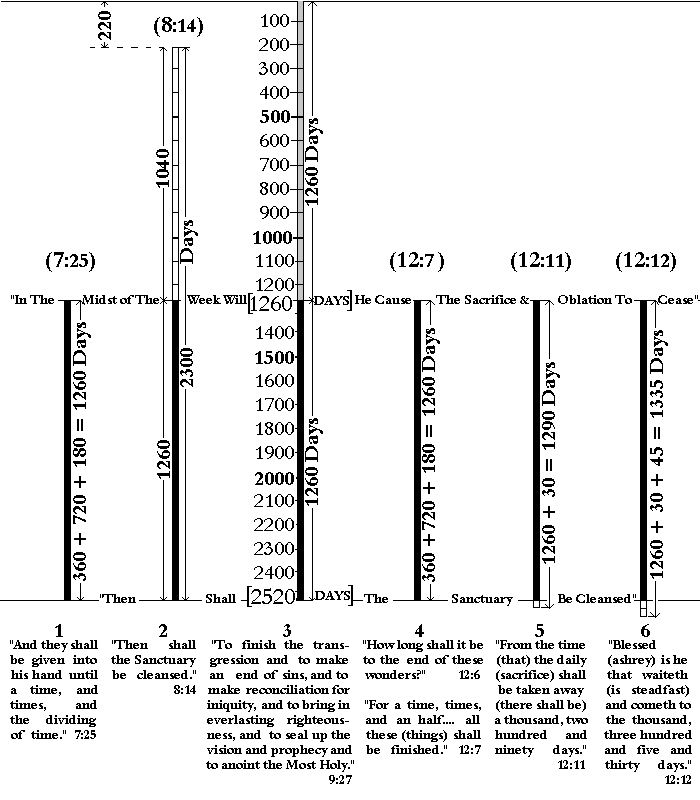THE SEVENTIETH "SEVEN", OR THE LAST WEEK OF DANIEL 9:27.

In examining the diagram
and the references in the book,
it will be seen
(1) that the only one
of these five periods of
"time" and "days"
that presents any serious
difficulty is that of the 2,300 days.
(2) That its terminus ad quem
is the same as the others,
namely the end
of the seventieth
seven is clear from
8:14,
which gives it as being marked by the
"cleansing of the Sanctuary".
Reckoning backward,
therefore,
the terminus a quo
of this period is seen
to be 220 days short of
the commencement of
the seventieth
"seven".
It is not clearly revealed what event or events will mark the commencement of these 2,300 days, but it will be probably some political crisis connected with the confederated kingdoms under the sway of the Antichrist. The key is possibly to be found in chapter 8, typified by the contention between the ram and he-goat representing Medo-Persia and Greece.
It is not clearly revealed what event or events will mark the commencement of these 2,300 days, but it will be probably some political crisis connected with the confederated kingdoms under the sway of the Antichrist. The key is possibly to be found in chapter 8, typified by the contention between the ram and he-goat representing Medo-Persia and Greece.
But,
though the terminus a quo
of this period is not given to
us in plain language (like for example,
the "midst of the week" of
9:27),
yet it will be known to,
and understood by,
the people of God,
who pass through
"the Trouble"
time of the seventieth
"seven",
for "the wise
(in that day)
shall understand"
(12:10).
If the
"time of trouble" of
Daniel
12:1
is a "time"
like the "time" of
7:25;
12:7
(Numbers 1 and 4, above),
that is to say,
one year,
then there are six
specific periods of time
in the book of Daniel,
in addition to the seventieth,
or last "seven".
If so,
the "time" of
Daniel
12:1
suggests that
"Jacob's trouble"
will be closed by a
"time"
(or year)
of acutest
"tribulation".
Does this correspond with
"the acceptable year"
of
Isaiah
61:2,
immediately preceding the
"Vengeance"?
The Diagram will illustrate the above remarks.
The Diagram will illustrate the above remarks.
